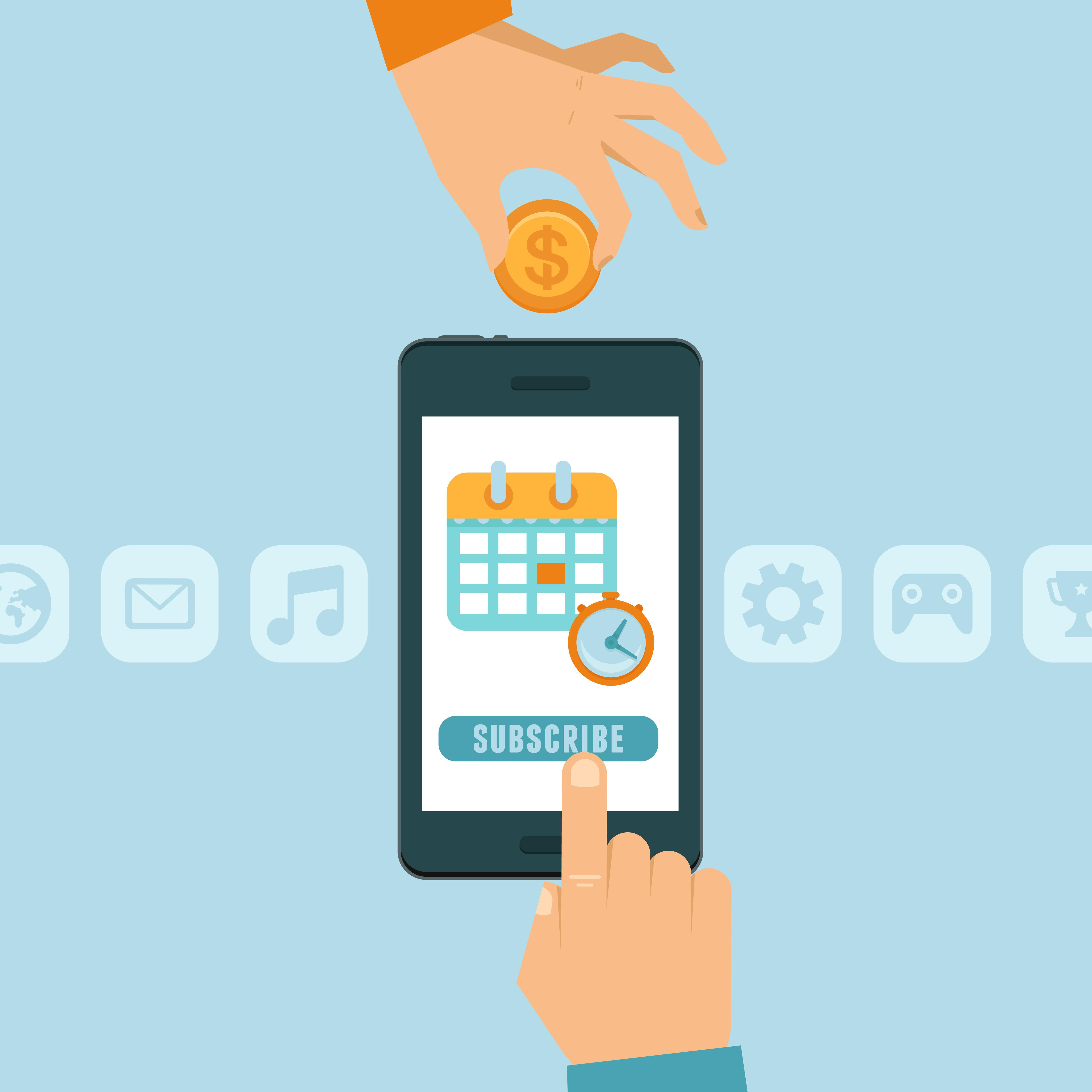Digital subscription revenue displacing digital advertising as a core revenue stream
Research partnership by FIPP and CeleraOne

Update: download the Snapshots from 2018, 2019 and 2020 here
In May this year (2018), the New York Times made an announcement that would have seemed near impossible only a few years back: an increase in total revenues. Their results were driven by a continued surge in digital-only subscribers with the publication boasting a 25.5% (or 139,000) year-on-year increase bringing their total digital subscription base to 2.8 million.
The New York Times may serve as the poster child of digital subscription success as far as scale is concerned, but it is certainly not the only player enjoying success in the paid subscription arena. Very encouragingly, more and more publishers are reporting that their subscription revenues, boosted by digital growth, have displaced advertising as their most significant revenue stream.
Deloitte estimates that by the end of 2018 news and magazine media will have more than 20 million digital-only subscribers. More important perhaps is their prediction that by the end of 2020, the proportion of subscription to advertising revenue for publishers will be 50:50 in digital. As recently as 2012, this split was 10:90.
In a challenging advertising market, where Google and Facebook are taking the overwhelming majority of growth in digital advertising and print continues to decline, this is reassuring news for any publisher reconsidering the value of their content offering and the potential revenues to be had by pursuing a digital subscription model. Interestingly, there is also increasing evidence that scale is not the only way to achieve success, and that an increasing number of publishers are carving out successful premium offerings as well.
Although it is often assumed that publications who publish in world languages like English have an advantage in attracting global audiences, Scandinavian and continental European countries are illustrating the value and benefits of news offered in a local vernacular and an intense focus on understanding consumer behaviour and needs in the local market.
Sweden, Finland and Norway are a particularly interesting example. Although these countries have much smaller populations, publishers in this region are enjoying tremendous success in convincing large portions of the population to pay for news. It does need to be noted though that in many Scandinavian countries, publishers have worked together and collectively implemented paywalls. In Sweden for example, it is estimated that 60% of publishers have paywalls in place.
Despite these examples of success, a comprehensive overview of how the market is evolving and a clear understanding of the sheer diversity and determination involved in driving paid subscription models remains hard to come by.
To this end, FIPP joined forces with paywall firm CeleraOne to create the 2018 Global Digital Subscription Snapshot. Drawing on both FIPP survey data, data from pv digest and publicly available information, we believe this report and its references serve as one of the most comprehensive documents yet to highlight the complex and diverse approaches publishers are taking to drive digital subscription growth.
“Publishers probably need 4 or 5 revenue streams to finance digital journalism. This snapshot shows that paid content is one of them and for an increasing number of publishers even the most important one” says Moritz Hilger, CEO of CeleraOne.
Below you will find an overview of key stats by title and our summary of key trends to be aware of. For live links to articles referenced please download the PDF report.

KEY INSIGHTS
1) Publishers are increasing investment in paid content
The deluge of fake news and data privacy breaches in recent years seems to be leading to a renewed consumer interest in trusted news sources and quality content. This, coupled with the apparent success that publishers are enjoying with paid subscription models, is driving renewed confidence amongst publishers and as a result, we see an increase in their investment in teams, technology and content.
It is important to note there is no instant recipe for success. The New York Times launched their digital subscriptions in 2011, and it is only in the last few years that we are seeing the hyperbolic growth they have become renowned for. Building up a digital subscription base takes years of persistent investment to refine content, develop analytical capabilities and understand the levers which allow reader loyalty to be converted into paid subscriptions.

2) Paywall models are becoming more dynamic and sophisticated
In addition to developing the capabilities above, evidence suggests that success is strongly associated with placing more content, not less, behind paywalls and using data to improve audience understanding. In particular, to understand what is likely to trigger conversion is becoming increasingly integral to developing paywalls.
As an example, the Wall Street Journal has developed a propensity score to assess a non-subscriber’s likeliness to be converted based on more than 60 signals which adjust the paywall to the individual user. We also see flexibility in how paywalls are employed based on the news of the day. On a big news day, restrictions on metered content may relax to draw users in but tighten up again after the event.
“In early days of digital subscriptions the decision-making process appeared binary and tended to focus on metered vs freemium. Today we see more and more publishers using hybrid approaches or dynamic models based on machine learning” says Caspar Seibert, Head of Business Development at CeleraOne.

3) Local markets are crucial to success
Success with paid content strategy are very much dependent on the market publishers are operating in. Broadly speaking we have observed three categories of markets:
i) Well-developed subscription markets
In these markets, paid content is most developed, and consumers already show a willingness to pay for content. This includes the US, UK, Scandinavian markets as well as France.
“The success of digital subscription services such as Spotify, Netflix, Hulu, and Amazon Prime have ‘normalised’ digital subscriptions in consumers’ minds. This, in turn, has made it possible for news publishers to make real progress in this area,” said James Hewes, President and CEO of FIPP.
We believe that these markets enjoy success due to both supply and demand side influences. On the supply side, Spotify from Sweden could have served as a primer for digital subscription adoption in Scandinavian countries and the same can be said for the impact of Netflix, Hulu and Amazon Prime (Previously Love Film in the UK) in markets like the US and the UK.
These developments, in turn, impact the demand side where we see an increased willingness among consumers to pay for content online rather than consume purely ad-funded content. This is partly driven – especially for news – by rising awareness of the variations in the calibre of news outputs.
“France is also an interesting example. Due to the language barrier, the successes in the French market is seldom reported in the English-language media, but some of the French newspapers are reporting larger subscription numbers, and evidence suggests that digital press flatrates reached download figures unseen anywhere else in the world because telecoms providers include them into their packages,” comments Markus Schöberl of PV Digest.
ii) Emerging subscription markets
European markets such as Germany, The Netherlands, Switzerland and Italy fall into this category. Although the concept of paying for digital subscriptions is not yet fully entrenched in these markets, there are interesting examples of successful approaches. Germany is evolving rapidly with BILD, Welt, Zeit, Suddeutsche, FAZ, Handelsblatt and also local newspapers like NOZ showing robust growth, especially in the e-paper market.
iii) Fledgeling markets
In these markets, a culture for pay for news is very poorly entrenched, but there are a small number of players moving into the field. This includes Russia, Poland, Spain and Austria, Argentina and Brazil, amongst many others. It is, of course, challenging for individual publishers to establish payment models where it is not yet culturally entrenched, but these markets are to be watched with interest as they develop.

4) Importance of the community and supporting a cause
In the US newspapers such as the NYT and Washington Post have enjoyed the so-called Trump Bump – a surge in digital subscriptions after the election of Donald Trump. His controversial actions have delivered a spate of big news days, and the successful deployment of dynamic paywalls have seen newspapers successfully convert readers drawn in on such days.
It is important to note however that there appears to be a general trend which is seeing readers rally behind publications and the cause or mission they represent. This could be party attributed to the impact of fake news and data privacy concerns which seems to be sparking a renewed interest in quality news sources which act as a champion for the reader’s own viewpoints.
The Guardian has not implemented a paywall, but they have very successfully leveraged their reader loyalty by creating a membership scheme. The scheme relies on readers to voluntarily sign up to keep The Guardian online assets free to read (their digital app does require a subscription). In 2016 they had 50,000 members contributing a minimum of £5 ($6.70) per month, by the end of 2017 this number had grown to 300,000. In the last year, they also had an additional 300,000 readers make a one-off contribution to The Guardian.
“Quality journalism is more important than ever. We clearly see that some readers want to support the newspaper and their mission. These emotional benefits are a relevant factor to convince people to subscribe,” says James Hewes from FIPP.
Of course, it’s not only English language news outlets that are enjoying success on rallying their reader community behind them and their editorial cause. We see evidence of this internally with a number of quality publications such Mediapart in France, De Correspondent in the Netherlands, Republik.ru in Russia, Die Republik in Switzerland and Gazetta Wyborcza in Poland are enjoying a success on this front.
Update: download Snapshots from 2018, 2019 and 2020 here
About CeleraOne:
CeleraOne provides cutting-edge technologies for paid content, identity management and user segmentation. It supports publishers to implement paywalls, registration walls, data walls and personalisation strategies. Clients include Axel Springer, Neue Zürcher Zeitung, Süddeutsche Zeitung, Zeit Online and more than 20 other news sites. www.celeraone.com
About FIPP:
FIPP is the network for global media, represents content-rich companies or individuals involved in the creation, publishing or sharing of quality content to audiences of interest. FIPP exists to help its members develop better strategies and build better businesses by identifying and communicating emerging trends, sharing knowledge, and improving skills, worldwide. www.fipp.com
Methodology Q&A
How was the data collected?
FIPP used propriety survey data as well as publicly available data to compile this report. Due to the use of publicly available sources, we cannot guarantee the accuracy or recency of the figures reported. The sources of our data is referenced in the tables above.
Why is my title or group not included?
We have tried to be as comprehensive as possible in sourcing data, but due to our reliance on publicly available day, this report should not be viewed as an exhaustive list. Should you wish to be included in future reports, please register your interest by e-mail Helen@fipp.com.
Why did you not include print and digital combinations?
We are aware that many publishers are enjoying tremendous success with packages which include both print and digital subscriptions. To create a level playing field and celebrate the growing success publishers are enjoying in selling digital only subscriptions, we’ve excluded all other subscription combinations for this report.
Why are your subscription costs different from those shown on a title’s website?
Subscription periods differ from title to title. As such subscriptions may be offered on a weekly, four weekly, monthly, quarterly or annual basis. In order to present the data in a format which makes it comparable, all subscriptions were converted to US dollar and calculated to represent a monthly subscription cost. As such the figure we present as a basis for comparison may not be always reflect by the actual subscription offers available on a titles website.








